On September 4 on the new calendar, Christians commemorate the holy and Virgin-Great Martyr Eulalia, the patroness of the Spanish city of Barcelona, who, as the local residents believe, saved it from destruction in a series of large terrorist attacks.
There is probably no one in Russia or America who hasn’t heard about the terrible terrorist attacks in Spain which occurred several days ago. However, our readers will probably be interested in learning about the “Spanish” view of what happened, and about the concealed, mystical underpinnings of these bloody events, of which absolutely nothing is said in the secular media. This article is based on the words of one Spanish officer, a believing Christian, which he related to the author.
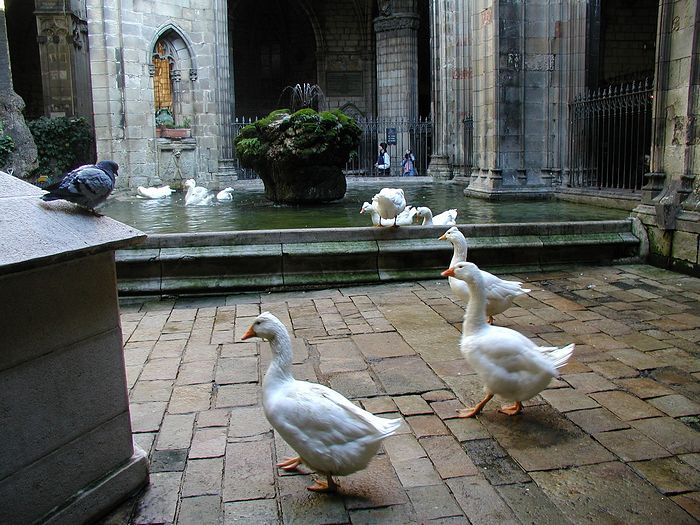 The inner courtyard at the Cathedral of the Holy Cross, with white geese dedicated to the martyr-patroness of Barcelona
The inner courtyard at the Cathedral of the Holy Cross, with white geese dedicated to the martyr-patroness of Barcelona There is an ancient expression—“Geese saved Rome.” Indeed, 2,400 years ago, some geese, living at one of the ancient Roman shrines, saved the city from an unexpected assault by night during the invasion of Italy by the Gauls. However, probably the majority of readers do not know that that there were also white geese living in the main cathedral of Barcelona, the capital of Catalonia, where the recent terrorist attacks took place.
“How can it be? We were in the main cathedral of Barcelona (one of the main tourist centers in Spain) and we didn’t see any geese”—the pilgrims among our readers might say. However, it is not so. The thing is that, the majority of believing, to this or that degree, Christian tourists in Barcelona consider the main Christian church in the city to be the Cathedral of the Holy Family of Christ (Sagrada Familia)—gigantic, but the relatively recent creation of the architect Gaudi.
Yes, this magnificent building is one of the most recognizable symbols of Barcelona, like the Cathedral of the Protection of the Theotokos and St. Basil in Moscow. The giant Cathedral of the Holy Family (the building of which began in 1882 on private donations, but is as yet unfinished) is reminiscent of a reliquary and adorned with several large towers of open construction, reaching a height of more than 330 feet, like church candles, reaching to Heaven.
However, it is not actually the city’s main cathedral. The main Catholic church of Barcelona is the little-known Cathedral of the Holy Cross and St. Eulalia (Catedral de la Santa Cruz y Santa Eulalia). It is an ancient building in a Romanesque style, based partially on the architecture of early Byzantine basilicas, but with pronounced Gothic elements. The cathedral was built by Barcelonians over the course of 122 years, and was finished in 1420, in the High Middle Ages. The church is dedicated to the Cross of our Crucified Lord Jesus Christ and to the holy Virgin and Great Martyr Eulalia, considered the heavenly protectress of Barcelona.
“Okay, but what do these Spanish Catholic churches and their saints have to do with us?” the majority of our Orthodox readers might ask, and in some ways, perhaps, they are right. However, the thing is that Orthodox Christians throughout the world (regardless of their opinion of the Catholic Church in general and it’s canonized saints in particular) venerated and venerate the saints of Western Europe from the period of the Undivided Church (i.e., those whose canonization took place before 1066). This includes Spanish martyrs of Late Antiquity and the Early Middle Ages, including the Great Virgin-Martyr Eulalia of Barcelona (commemorated Aug. 22/Sept. 4 according to the Orthodox Menologion), about whom our story will now speak.
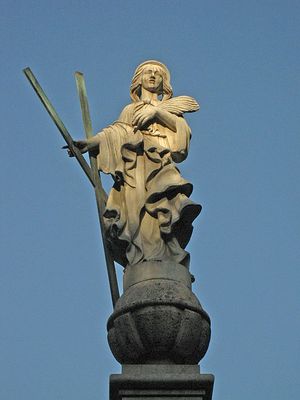 A statue of St. Eulalia, already considered the guardian of Barcelona, and now the protectress from terrorism
A statue of St. Eulalia, already considered the guardian of Barcelona, and now the protectress from terrorism Speaking with her neighbors, among whom were very few Christians at that time, but mainly adherents of various pagan cults, she turned many of them to Christ. This was quite amazing, but the young virgin did not stop there. It grieved her that Christians, committing no evil, were forced to hide their religious affiliation, hold secret Liturgies, and endure all kinds of repressions, including mass executions (this was the time of Emperor Diocletian’s reign, from 284-305 AD, one of the most terrible persecutors of the followers of Jesus Christ in world history).
Despite the initial entreaties of her parents, armed with her deep faith in God, Eulalia naively planned to go to the city of Tarraco (Tarragona), then the capital of the Roman province of Tarrakonia, to get an appointment with the governor of the whole province and to convince him to change his attitude towards Christians. However, the young preacher initially decided to visit the nearest large city, having then the proud title “Colonia Faventia Julia Augusta Pia Barcino” (“Barcino” for short, later becoming the modern Barcelona), to convince the city prefect Datsin to cease the anti-Christian persecutions, at least in the surrounding areas.
However, the young Christian did not manage to have any dialogue with the Barcino ruler. Moreover, the prefect, known for his crudeness and brutality, accused Eulalia of slandering the state authorities, of blasphemy (she flung a handful of dirt on the altar of the Roman gods), promoting ignorance and barbarism (Eulalia said that the depths of faith are higher than any Roman learning, if it is useless for the soul or even leads to destruction, as with the prefect Datsin), and even of insulting the imperial family (the young Christian called the emperor Diocletian an enemy of Christ and an unjust tyrant-torturer), and gave her over to trial. Completely obedient to the will of that cruel persecutor of Christians, the judicial collegium sentenced Eulalia to terrible punishment for the words of truth she had spoken—the young preacher was to be subjected to thirteen acute tortures (in accordance with her age), which she was not to survive, and which were to serve for the entertainment and edification of the crowd of onlookers.
We will not describe here the surviving terrible details of what happened with this young Christian girl, daring to hurl an open challenge to the Roman state machine. We will say only that one of the tortures consisted of the young Great Martyr being put in a barrel, the inside of which was studded with spikes, and rolled down from the top of one of the hills. Thanks to the memory of the residents of Barcino, many of whom were even secret Christians then, and their successors who preserved the memory of what happened, among the ancient streets of Barcelona there is one bearing the fearful name Baixada de Santa Eulalia (“The Descent of St. Eulalia”)…
Incidentally, for some reason in the Orthodox tradition St. Eulalia is called a martyr; but it seems that was simply a misunderstanding, for she endured many tortures, and did not renounce our Lord Jesus Christ and the Most-Pure Virgin Mary, and thus, of course, the rank of Great Martyr is more fitting for her.
Despite her terrible tortures and punishments, the young saint did not renounce Christ and blessed the citizens of Barcino, already then a large and prosperous port, who had gathered to watch her torment. Bravely bearing all the torments appointed her by the pagan court, the young preacher was terribly wounded, but still alive, and then the authorities decided to finish her off, and crucified her on a diagonal cross. According to the life of St. Eulalia, at her death white birds—according to one version white geese, and according to another, white doves—flew down to the martyr’s body, and the city was unexpectedly covered with white snow, like a shroud.
Then many Barcelonians, even her torturers, except the most hard-hearted government officials and priests, realized they had killed an innocent girl and repented, and several even were converted to Christ. From that very time, white geese became the symbol of the martyr Eulalia of Barcelona.
And now in the Barcelona cathedral there is a separate inner courtyard, where thirteen white geese live (as per the age of the saint and the number of her tortures), and the young virgin-Christian is considered the heavenly patroness of the city.
The body of the saint was not lost (although the bodies of state criminals were usually thrown into the sea at that time), but was taken by some Barcelonians and buried with due honor. Later, after Christians received their freedom of religion under Emperor Constantine I, a memorial was erected over her grave, and then later, during the reign of Christian Visigothic kings in Spain, the church “Santa Maria del Arens i Santa Eulalia” was erected there.
In 713, during the invasion of the Spanish Visigothic Kingdom by Muslim invaders from Morocco and Algeria (of whom it was known that they seriously mocked Christians sacred objects, and burned the relics of saints), the Barcelonians hid the remains of the martyr Eulalia. In the ensuing epoch of wars and incursions, the saint’s relics were nearly lost, but were rediscovered in 878 and placed in the newly-built Church of the Mother of God of the Sea (Santa Maria del Mar). Centuries later, in 1339, during the triumph of the Reconquista, the relics were placed in a new sarcophagus by Spanish Christians and transferred to the new cathedral in Barcelona being built at that time, where they have rested until our day.
It can also be noted that in recent years, usually on September 4 new style (on the commemoration of the martyr Eulalia of Barcelona in Orthodox Tradition), by agreement with the Catholic clergy, some priests of the Russian Orthodox Church sometimes hold liturgical services in the Barcelona cathedral’s crypt at the shrine with the saint’s relics.
We did not say all of this for no reason, but with the aim of discovering the connection of the events of the past days with the deeds of past centuries. As you know, on August 17, a Moroccan driving a van deliberately and at full speed rammed a crowd of tourists on the pedestrian Rambla Boulevard in Barcelona, and a bit later another van ran over some citizens of the city of Kambrilis (75 miles from Barcelona). Islamic radicals claimed responsibility for both terrorist attacks. In all, in both attacks, fifteen people died and 130 were injured (among them were residents of thirty-four countries, including one Russian).
During the operational-investigative activity of the Spanish law enforcement agencies, five Islamic extremists were eliminated in Kambrilis; on August 21, Yunis Abu Yakub, who committed the terrorist attack in Barcelona, was shot at a gas station, and four extremists from a Catalonia Islamic cell were arrested. “We are not announcing the end of our work,” the chief of Catalonia police reported at a press conference. “Yes, the core of the terrorist cell of twelve people has been destroyed, but we are continuing to study their connections, both here and abroad.” As of August 26, the investigative authorities of Spain are looking into the actions and connections of more than 800,000 people suspected of Islamic extremism, with the absolute majority being migrants from Maghreb or their first-generation descendants.
Of course, the terrorist attacks that occurred are terrible crimes, although the terrorists’ plan, as it turns out, was much more grandiose. During the interrogations which took place August 20-24, the arrested Islamist-immigrants from Morocco (Mohammed Houli Chemlal, Driss Oukabir, Salah el Karib, and Mohammed Aallaa) reported that they were preparing a much larger-scale and more “significant” event.
The radical followers of the religion of Allah declared that they “wanted to destroy the main Christian sanctuaries in Barcelona,”—the Cathedral of the Holy Family of Christ and the Cathedral of the Holy Cross and St. Eulalia. “We wanted to do it, because under Sharia, all non-Muslim places of worship must be destroyed, and only small temples of ‘the people of the Book’ (i.e., Jews and Christians), and only by the desire of the Muslims themselves, can be left for the infidels. However, the main and larger sanctuaries of the non-Muslims, even of the ‘people of the Book,’ must be either destroyed or turned into mosques.”
When you get acquainted with these sayings of the terrorists, the words will come to mind for any educated person about how Islam is unequivocally a religion of peace and goodness, and Muslims themselves, in their own words, “clearly walk the path of truth,” and the whole rest of the world, as they declare, “lies in great delusion…”
According to the Spanish police, the Islamists were planning to destroy the large Sagrada Familia Cathedral with an especially powerful explosive device, which they called amongst themselves the “mother of Satan” or “a special gift of Allah for the infidels.” They planned to destroy the smaller Santa Cruz y Santa Eulalia Cathedral with a less powerful, but still terrible in power, explosive device.
However, they did not manage to realize their ambitious plan for intimidation. According to one of the terrorists who survived, Mohammed Houli Chemlal, as the Muslim terrorists were surveying the places they planned to attack, whenever they visited both cathedrals they always began to feel very bad. Their heads were spinning, they felt nauseous, and their legs even sometimes gave way. It was especially noticeable when visiting the Cathedral of the Holy Cross and the Holy Martyr Eulalia of Barcelona; but as soon as they left the cathedrals, they returned to their usual state, and therefore they believed that “the mystical powers which oppose Allah show their influence in these places” and are trying to prevent them from blowing the cathedrals, these “main sanctuaries of the infidels,” and supposedly that meant that they “are on the right path.”
Another Islamist noted that the white geese, dedicated to the virgin-martyr Eulalia and living in the Cathedral of the Holy Cross, greatly aggravated them. The birds began to hiss and honk loudly, when these latter-day “soldiers of Allah, following the path of jihad of the sword” drew near to them while surveying the area in preparation for the attack…
In the end, the terrorists retrieved all the necessary components and began to assemble their explosive device; but in the first of their two secret laboratories, located in the city of Alcanar (100 miles south of Barcelona), while assembling the bomb intended to blow up the Cathedral of the Holy Cross, there was an explosion on August 16, in which the Islamist cell’s main explosives technician was killed. The Spanish media reported about this accident, which possibly happened because of household gas.
The Islamists were astonished and lamented, but having decided that it was just an unfortunate incident, they continued to assemble the main bomb for blowing up the Cathedral of the Holy Family of Christ in their second hidden laboratory. And there on the morning of August 17, again during the process of assembling the bomb, an even more powerful second explosion occurred, which killed Abdelbaki Essati, the imam of the city of Alcanar who was also the leader of the terrorist group. This has already been reported in the Spanish media as a possible explosion during preparations for a terrorist attack.
Then the Islamist camp literally burst into a panic. They had lost both explosive devices intended to blow up the Barcelona cathedrals, and their main demolition man and their group leader had both died. Indeed, we can say that the Lord sees all, and He is quite long-suffering! It would seem, guys, that you received an exact indication that you are doing wrong, so repent, drop your unbelief in the mercy of Christ, leave the service of the dark powers and cast off your extremist views.
But no! By the mysterious indicative explosions in Barcelona their “majestic” plan broke “at the root,” but they, by their own admission, decided “to walk the path of service to Allah to the very end” and looked to the experience of the terrorists in Nice, especially since they already had vans. What happened next, we all know.
Of course, there were many victims, but, with all sympathy for the victims, we all recognize that the number could have been dozens of times higher, and the age-old main masterpieces of Christian architecture in Barcelona could have been destroyed by the hands of the terrorists. Therefore, the faithful of Spain believe that the Lord Jesus Christ, His Holy Family, and St. Eulalia of Barcelona mystically saved Catalonia from such horrible Islamist strikes.
Of course, skeptics and atheists may say once again that it’s all just a double coincidence. However, the members of the Islamist cell themselves, captured alive, confess that they were guided in their actions precisely by religious-mystical motives, and that their plan to blow up the Barcelona cathedrals unexpectedly collapsed by circumstances of a mystical quality, though of quite another sort, and so they committed the “simple” automobile assaults on the peacefully strolling residents and guests of Barcelona out of despair.
Obviously, the Moroccan Islamists, blinded by their hatred for Europe and Christianity, did not think that some little thirteen-year-old Christian girl, who died at the hands of pagan 1,700 years ago, was able to protect the Barcelona cathedrals from destruction, or the residents of the city, whose protectress from terrible destruction at the hands of the terrorists she became.
However, the Islamists were sorely mistaken, being deceived by the dark powers. They, in their own words, “placed all their hope in Allah.” But to quote the main holy book of Muslims, the Koran, “Do they feel secure from the design of Allah? No one at all feels secure from Allah´s design, except the people who are [doomed to be] losers” (Al-A'raf Surah, v. 99). The Moroccan terrorists, in the end, turned out to be among those “doomed to be losers.”
Experience showed that due to their false hopes “they were in manifest error” (Yasin Surah, v. 47), for “Allah is the best of schemers” (Ali ‘Imran Surah, v. 54). After all, “Allah verily sendeth whom He will astray” (Fatir Surah, v. 8), and one of his sacred names in Islam is even Al-Makir (“The Cunning,” “The Deceiver”).
Nowhere in either the Ten Commandments in the Old Testament or in the Good News of the New Testament does the Lord God deceive or use cunning against any Christian; He is constant and unchanging. Moreover, He forbids any lie or deception (No lie is of the truth [1 Jn. 2:21]), never leads people into sin and delusion, and calls all to be pure of heart. The God of Christians is far removed from any deception, and therefore directly says, I am the way, the truth, and the life (Jn. 14:6).
Thus, we hope that many of our readers will join Christian believers from Spain to America and Russia who believe that not only St. Eulalia’s geese, but the fiery prayers in Heaven of the young virgin-intercessor of Barcelona and the direct will of the Lord, again saved the capital of Catalonia from destruction, and thousands of residents and tourists of this hospitable city from a sudden and fearful death.

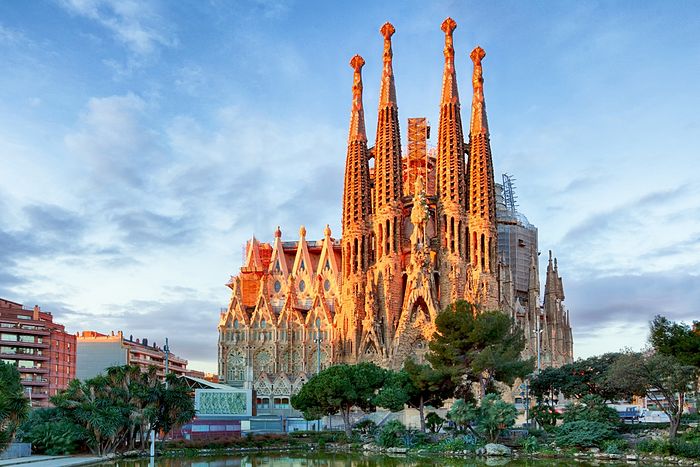
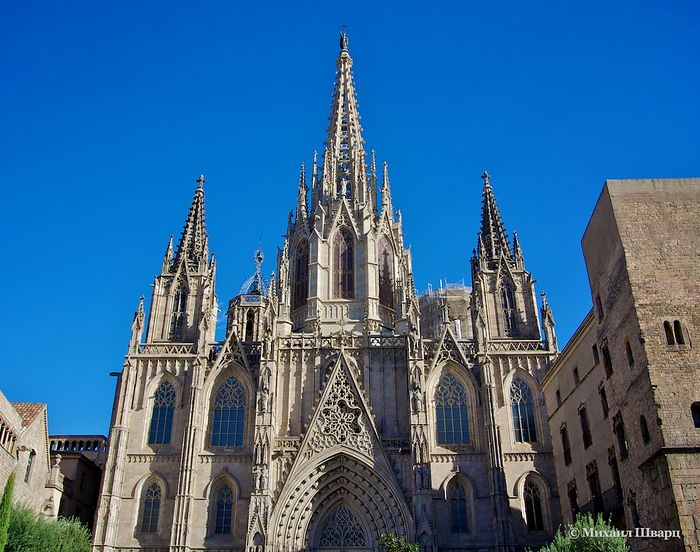
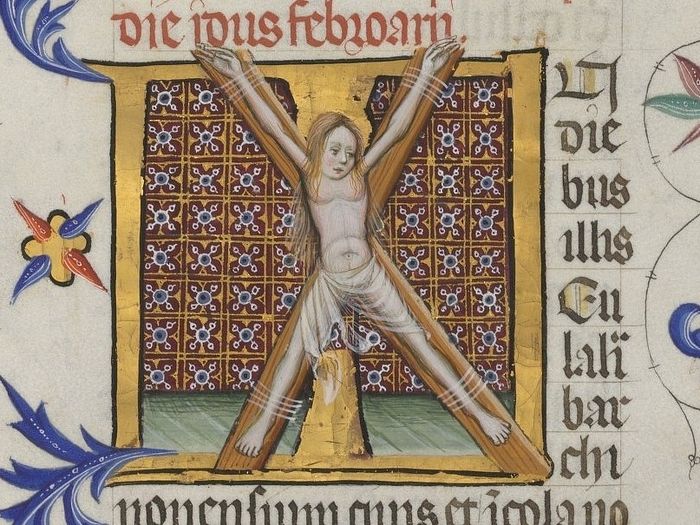
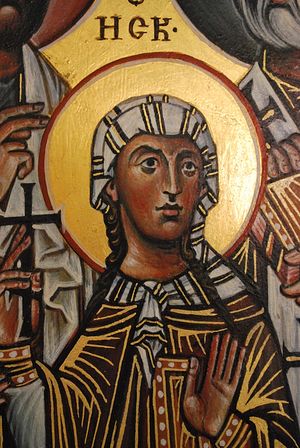
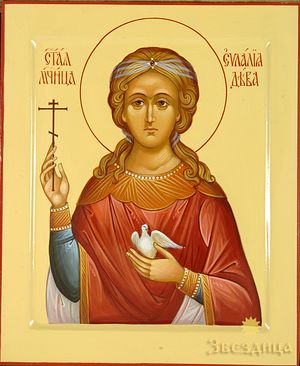
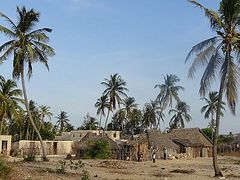
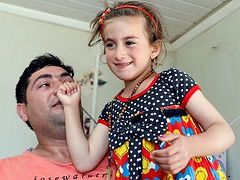
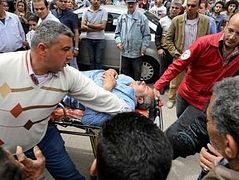
http://www.johnsanidopoulos.com/2015/12/the-heretical-icon-of-holy-family.html